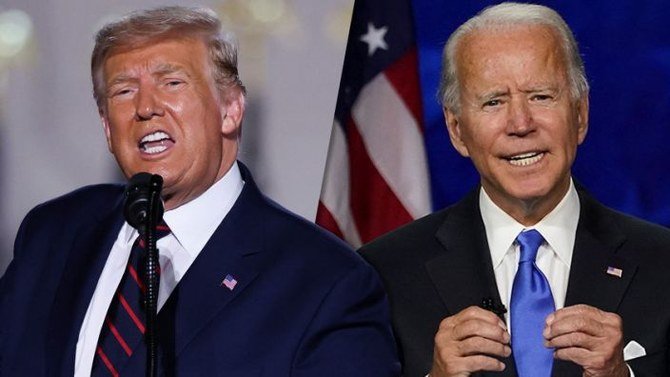CHICAGO: Everyone in the United States is touting the idea of voting by mail, but I just don’t have confidence in the US postal system.
The election system we use to count votes is already unreliable, and adding the postal service, which is even more unreliable, only raises more concerns.
I’m pretty sure we will be waiting for days and maybe even weeks to figure out who has won the Nov. 3 presidential election, Donald Trump or Joe Biden. And there are many other important races including for US Senate, Congress, and state legislative offices.
But the factors deciding who wins the presidential race may be restricted to only a few American states based on the results of the 2016 election that Trump won over Hillary Clinton. There are seven states were the percentage difference between Trump and Clinton in the 2016 election results were so close that they could easily switch.
Don’t listen to the American polling. The fact is US media polling tends to reflect the “popular vote” which is not how we elect a president.
Polling is great for many issues but not for the American presidential election.
Americans use the “Electoral College Delegate Voting” (ECDV) system, which protects the voice of all 50 American states and Washington DC to play a role in determining who will be president. ECDV gives smaller populated states like Iowa an equal standing with larger populated states like New York.
Hillary Clinton won almost 3 million more votes than Trump in 2016 giving her the “popular voter edge,” which clearly was reflected in the polling that misled many into believing she would win the election.
This year, with the strong push by Democrats to increase voter turnout, Biden could win 4 million more votes than Trump, which is also reflected in the current polling. But most of that 4 million voter edge will not directly affect the Electoral College Delegate voting system.
In states that are heavily Democratic such as New York, Illinois and California, I suspect the vote will increase sharply. But increasing the vote in Democratic dominated states won’t change the end result for Joe Biden. Regardless whether Biden wins Illinois by 55 percent, as Hillary did in 2016, or by 75 percent this November as some are projecting, it won’t change the number of Electoral College Delegate votes that Biden will receive from Illinois, which is only 20.
The public is better informed by understanding which states to follow on election night, and not by being lobbied by the biased American mainstream news media, which clearly supports Biden over Trump.
In the ECDV system, the winner needs at least 270 total votes from the 538 votes available in the 51 state and district jurisdictions (which includes 50 states and Washington D.C.).
Hillary Clinton won 20 states and Washington D.C., giving her only 232 delegate votes. She won most of those by strong margins, with the exception of New Hampshire, which was 46.8 percent to Trump’s 46.5 percent, and Minnesota, which was 46.4 percent to Trump’s 44.9 percent.
Trump won 30 states, giving him 306 ECDV. He won most of those states by significant margins with the exception of seven states which are the battleground states that you should monitor on election night and the week that follows.
Trump had 23 states that gave him very strong margins of victory in the south and the middle west.
There are seven Trump states that are potential swing states. Here is how I break them down.
Four of the states are B-Battleground states and are tougher for Biden to win from Trump because of their voter histories and the spread between Trump and Clinton from 2016. But Biden can take them based on voter activism there and voting histories that have varied widely.
The four are: Ohio (51.3 percent Trump and 43.2 percent Clinton) with 18 ECDV; Iowa, (51.1 percent to 41.7 percent) with 6 ECDV; Wisconsin (47.2 percent to 46.5 percent) with 16 ECDV; and Michigan (47.3 to 47 percent) with 16 ECDV.
There are three states that are A-Battleground states that Trump can’t afford lose, again because of the history of those states and the narrow margins. They are Pennsylvania (48.2 percent to 47.5 percent) with 20 ECDV; Florida (48.6 percent to 47.4 percent) with 29 ECDV; and North Carolina (49.8 percent to 46.2 percent) with 15 ECDV.
If Trump loses any one of those A-Battleground states, it suggests that Biden will probably easily take 3 or all of the 4 B-Battleground states, giving Biden the election.
If Biden takes Ohio and Michigan and one other B-Battleground states, Trump can still win the A-Battleground states yet lose the election. Michigan and Ohio are up for grabs and are close, for sure, and Biden is definitely closer to winning there than in the other states.
Of course, this is just an election roadmap. Who reads maps these days anyway that have all been replaced by electronic navigation systems?






















